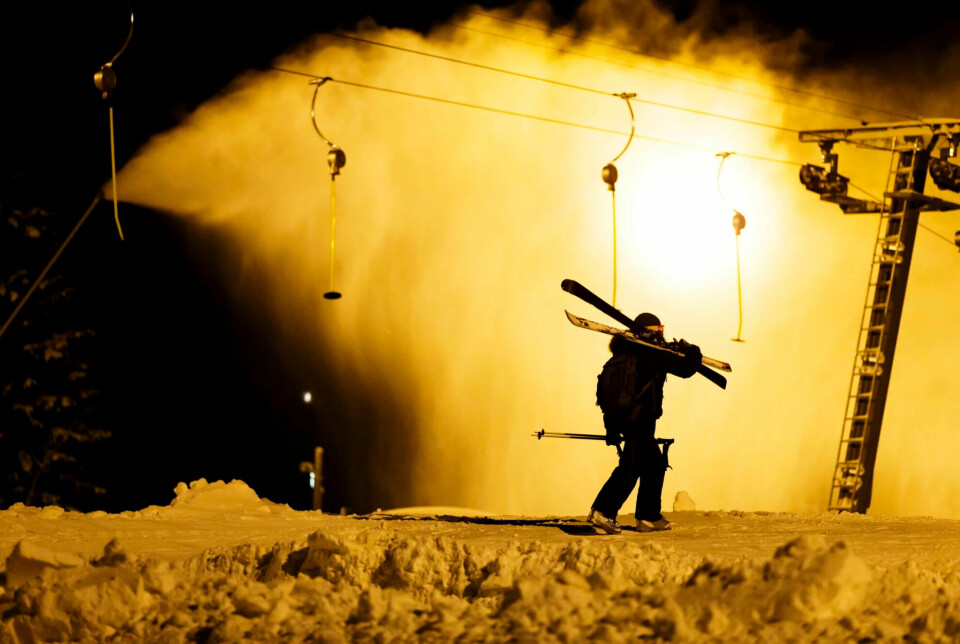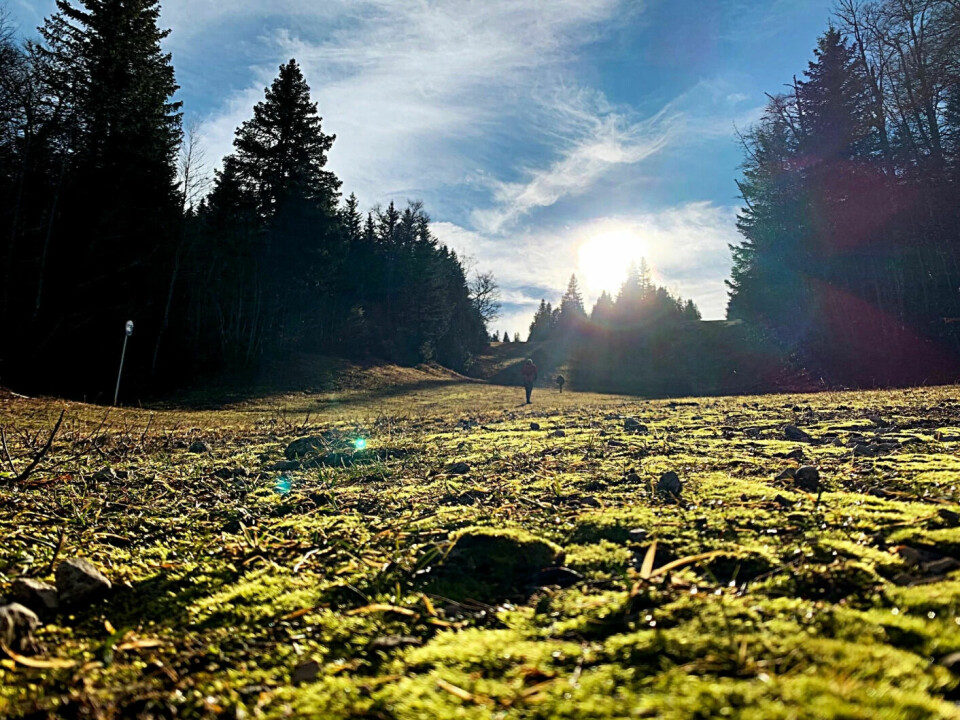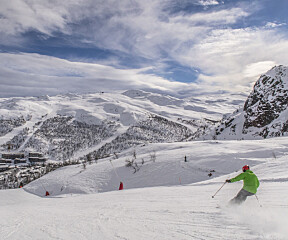
Much of the ski tourism in Europe could disappear
For the first time, climate researchers have calculated the effect of climate change on snow in all of Europe's major ski slopes.
A total of 2,234 ski resorts in 28 European countries are included in the new study.
The conclusion is that without the production of artificial snow, 53 per cent of the ski resorts will face very serious problems – if we reach 2 degrees of global warming.
If there is 4 degrees of global warming, 98 per cent of ski resorts in Europe will have to close without artificial snow.
High up in the mountains in Norway and Turkey, some might manage to survive.
What about artificial snow?
This is if the lack of natural snow is not compensated for by large amounts of artificial snow.
Assuming that half of all the snow in the 2,234 ski resorts is artificial snow, then ‘only’ 27 per cent of the ski resorts will face major problems at 2 degrees of global warming.
With 4 degrees of warming, 72 per cent of the ski resorts will hardly be able to cope, even with large amounts of artificial snow.
Switzerland and Austria
Around half of all the ski slopes in the world are in Europe. And a total of 80 per cent of the world’s major ski resorts can be found on our continent.
The Alps alone account for 43 per cent of the world's ski tourism. Over 200 million visitors flocked to the ski slopes in the Alps in 2019.

Even though the slopes in the Alps often lie over 2,000 metres above sea level, many are already struggling with snow conditions. The least snow is found on slopes in Italy, Slovenia, and Germany.
Switzerland and Austria are faring the best.
Even less affected by the warming so far are ski slopes in Norway.
Snow in Norway
Here at home, the Western Norway Research Institute has collaborated with several other Norwegian research institutions to examine how global warming will affect future Norwegian ski tourism.
The ClimTour research project has developed a service that shows how much snow the most important ski regions in Norway can expect to receive towards the middle and end of this century.

Ski destinations located far inland or at high elevations will still be able to get quite a lot of snow in the future.
There will be the least amount of snow going forward in ski slopes that are not located in the mountains, researchers found.
If we are not able to cut greenhouse gas emissions, only Finnmarksvidda and the high mountains in Southern Norway will be possible ski destinations in a few years.
Tourism and emissions
Tourism likely accounts for just over 8 per cent of global greenhouse gas emissions.
Half of this is due to the transport of people to and from ski slopes and other tourist destinations.
Producing artificial snow using energy and water also contributes to increasing greenhouse gas emissions.
But in the grand scheme of things, the production of artificial snow only makes up a modest part of the total greenhouse gas emissions related to ski tourism in the ski resorts, the researchers behind the European study point out.
———
Translated by Alette Bjordal Gjellesvik.
Read the Norwegian version of this article on forskning.no
Reference:
François et al. ‘Climate change exacerbates snow-water-energy challenges for European ski tourism’, Nature Climate Change, 2023. DOI: 10.1038/s41558-023-01759-5 (Abstract)






































